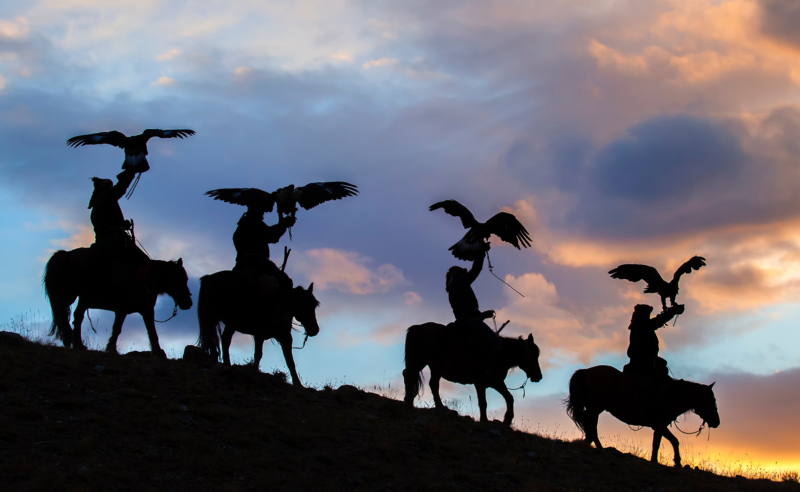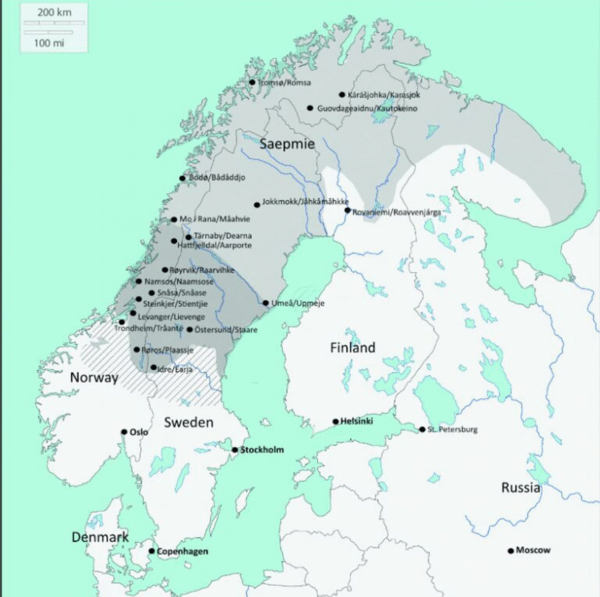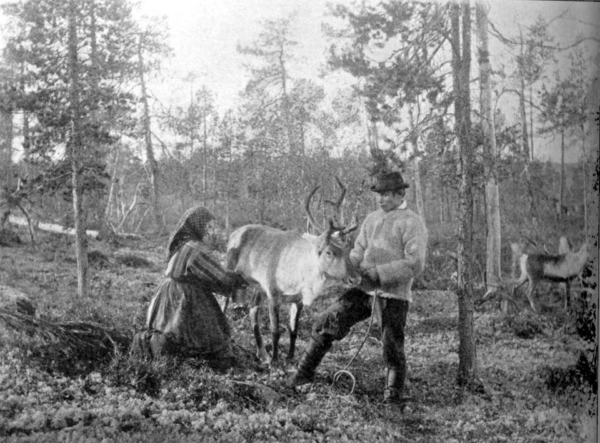
Mongolian Eagle Hunters, Photo by Guy Bryant
With thanks to Jenet Johnson
The word Solstice means Sun-Mark; there is one at mid-winter and one at mid-summer. They mark the linear measure of “days” growing longer or shorter. If work, sports, gardening or a nomadic life positions a person outdoors, these seasonal turns signal a shift in focus. In the northern hemisphere peas planted by St. Patrick’s Day are close to harvest and skiing is over, while in the southern after-winter solstice the storms traditionally lessen and the weather calms.
In my blog series on the Hunter archetype our focus for the northern Summer Solstice is Nomadic Hunters. Jenet Johnson is a member of my online Nia class (facilitated by Rachael Resch.) At times Jenet shares her journey of connection to her Sami nomad ancestral line so I asked her if and how the Sami people were hunters. Her knowledge is part of this blog.
Also, alongside my own knowledge and research, I use a series of prompts for Claude AI, and note Claude’s contributions as we go along. I also added wonderings, poems and prayers here and there in italics.
What emerges from this wandering exploration fascinates me and I hope the same for you.
Traveler, wander with me in this forest of knowledge.
Wayfarer, here is our history of grief and heritage of promise.

Vincent van Gogh, Musée d’Orsay, Paris, Public Domain
Dominate Culture Definition of Nomad
The definition is gathered from a series of online dictionaries. Please note the underlying cultural bias against being a “nomad.”
From Merriam-Webster, Oxford…
- An individual who roams about without a goal or purpose.
- Someone without a fixed home who would rather wander from place to place than set down roots, like the nomad who crashes at friends’ apartments instead of renting.
- Nomadic hunter-gatherer tribes follow the animals they hunt, carrying tents with them. Nomadic thus means anything that involves moving around a lot.
- A person who does not stay long in the same place; a wanderer. “Dolly was a nomad who had finally taken root in Hawai’i.”
- A member of a people having no permanent abode, and who travel from place to place to find fresh pasture for their livestock.
“The withering of their grasslands forced the nomads of the Sahara to descend into the Nile valley.”
This last example sentence ties us to my last blog, “Swearing by Land ‘o Goshen.” Joseph of the Coat of Many Colors who became Pharaoh’s right-hand Advisor came from a nomadic shepherd people.
A Less Prejudicial Description of Nomad
Edited by Lola from the Academic American Encyclopedia, 1997:
Hunter-gatherers differ from agriculturists in that they hunt, trap, fish and/or gather edible wild animals and plants for food and other useful materials. Also, because hunting and gathering depends on the health and vitality of the natural environment, these peoples tended to live a sustainable lifestyle by limiting their impact on nature.
Besides having different methods of food acquisition, hunter-gatherer peoples differed from modern agricultural societies in several cultural respects. Hunter-gatherers typically lived in “band”-level social units, consisting of one to several families. These bands were typically egalitarian, shared resources and hunted and gathered cooperatively.
Hunting and gathering are believed to be the two oldest organized occupations in the world.

Neanderthal Flute, Creative Commons
Who Are Those Early Hunter-Gatherers?
(with support from Claude AI)
My husband has been watching some archeology/history videos on people around the world who are exploring the more-than-human Neanderthal Peoples. In our lifetime people have become aware that many have some Neanderthal genetics.
Neanderthals (Homo neanderthalensis) existed from about 400,000 to 40,000 years ago and are considered close relatives of modern humans. Powerfully built, and very strong, they adapted to the cold climates of Ice Age Europe. (Read those sentences again – they lived through the Ice Ages – moving with and hunting mastodons!) They were skilled hunters, collectors, and possibly some early chemists. My husband is in his third year of learning to play their very complex flute.

Painting of the Lascaux caves, Creative Commons
Recent evidence suggests that Neanderthals were predominantly nomadic, moving seasonally to follow animal migrations.
- Mobility: Fossil and tool examination indicates that Neanderthals lived highly mobile lifestyles, moving across large regions.
- Shelter: They relied heavily on natural shelters like caves, which provided consistent habitat while allowing mobility between sites.
- Hunting: Their diet mainly consisted of large game, hunted using sophisticated hand-crafted tools, such as scrapers and spears (Pitts & Barton, 2007).
However, some evidence from more recent finds indicates that certain Neanderthal groups may have had semi-permanent settlements, especially in favorable environments with abundant resources. In one of the programs my husband watched they explored how the Neanderthals around the Mediterranean and in Europe were wiped out along with every other living thing in those areas by a gigantic volcanic eruption.
Wondering What If…
The Neanderthals were telepathic.
40,000 years is a very long time to become anything.
If you didn’t need words you wouldn’t invent them.
We, who rely on spoken and (lately) written language,
Took around 10,000 to destroy the planet.

Hunter-Gatherers of the Arctic and sub-Arctic
The term “arctic” refers to the region of the Northern Hemisphere which lies above 66º 33’ north latitude. The landmasses in this region are characterized by either “tundra” or “taiga” biomes.
This area includes:
- the Arctic Ocean.
- the Northern most regions of the Europe, Asia and North America.
- numerous islands and archipelagoes, which lie off the coasts of these continents.
- the sub-Arctic region lies directly south of the Arctic.
This is the northernmost latitude at which the sun is seen during the winter solstice and the southern limit of the midnight sun (24-hour summer day). Hunter-gatherer peoples have inhabited the Arctic and sub-Arctic regions of the planet for over 10,000 years and continue to do so today.
Mongolian Eagle Hunters
(information provided by Claude AI)
Location: Western Mongolia, particularly among the Kazakh and Mongol nomads.
Lifestyle: These groups practice ancient falconry, hunting with trained eagles, mainly in semi-nomadic or pastoral settings.
Housing: Traditional dwellings include gers (yurts), which are portable, round tents easily dismantled for seasonal movement.
Transportation: Horseback riding remains essential; modern motorbikes and trucks are increasingly used. (camels, sleds, snowmobiles
Food: Meat from livestock (sheep, goats, camels), dairy products, and hunted game.
Clothing: Thick, fur-lined deel (traditional robe), designed for cold weather, along with boots, hats, and gloves suited for outdoor activity.
Communication: Use of satellite phones, mobile networks, and increasingly, internet access for community connection, communication and access to markets and information.

Photo by Wessel, Ellisif Rannveig, DigitalMuseum
Reindeer Heartbeat: The Sami People
I opened this blog mentioning that Jenet Johnson provided research on the Sami people’s nomadic hunting. An email from Jenet Johnson on the Sami:
I had fun looking around….The first two citations are general descriptions of hunting and gathering in Sapmi. The Sami Cultural Center is a goldmine of information. I went through my collection of Baiki articles and came up with the citations listed below by Issue #. If you have any further questions, just ask. The interview with Harald Gaski – “Listening for the Reindeer’s Heartbeat” tells of his Sami upbringing. Harald Gaski is now 70 years old.
https://www.laits.utexas.edu/sami/diehtu/siida/hunting/jonsa.htm#
https://www.tota.world/article/173/
https://www.samiculturalcenter.org/ (Baiki “tab” is located at the top right of the page)Baiki – the North American Sami Journal
Issue 5 Fall 1992 “The Bear” p. 5
Issue 6 Winter 1993 “The Bear Hunt” p. 8
Issue 7 Spring 1993 “The Bear Feast” p. 8
Issue 31 Spring 2009 “Listening for the Reindeer’s Heartbeat” p 5Sami film festival streaming…Nordic Heritage Museum (Seattle) and Scandinavian House (NYC) go to https://nordicmuseum.org/ for a virtual streaming ticket ($25) under Events tab at top of page.
Let me know if this helps.
Love and blessings,
Jenet
I recommend you also read the references for serious insight into this modern nomadic culture.
Here are a few temptations from an interview with Harald Gaski. The first quote tells us who Harald Gaski is. The other three paragraphs are extracted to pique your interest to read the full “Listening for the Reindeer’s Heartbeat” article.
We are grateful to the American Indian magazine Winds of Change for granting us permission to publish this interview with Harald Gaski, which has been slightly edited. The original conversation took place in the fall of 1997 when he was a scholar-in-residence and visiting professor at the University of Colorado in Boulder. Harald Gaski is currently associate professor in the Faculty of Humanities, University of Tromsø, Norway and chair of the Sami Non-fiction Writers Association. He is the author of numerous books and articles on Sami literature and culture and has been a frequent contributor to Báiki from our very first issue. by Paula Palmer
In ancestral Sami society the father’s older brother had the specific assignment to teach his nephews traditional livelihoods and knowledge, so that was my uncle’s task. … Не combined teaching me practical skills with telling relevant stories that accompanied the instructions. … I found out that in a way I’m still practicing those skills because I’m still “putting up snares” to catch language. In Sami the word “language” means the same as “to snare,” and “language” also means a “trap.”
My uncle also taught me that every animal has its own language. Rievssatgiella is the ptarmigan’s language and njoammilgiella is the language of the hare. I learned both languages from my uncle and both had stories connected with them.
We have been told that when the Great Spirit created the people who were to become the ancestral mothers and fathers of the Sami, he knew the difficulties that awaited them. In order to give them faith in the future, something in which to believe and comfort them in trying times, he placed the living beating heart of a two-year-old female reindeer at the center of the Earth so that each time the Sami felt their existence threatened, they could put their ears to the ground and listen for the heartbeat from below. If the heart was still beating, their future would be secure. The heartbeats are connected to the rhythm of the songs that were created to praise the contrast between Samiland’s harsh tundra and the soft, warm lap of Mother Earth. Western society has removed itself so much from Nature that they don’t even understand its voice anymore.
And there is this astounding description in “The Bear Hunt”written and illustrated by Mel Olsen (page 8). And Wikipedia does a fine job with many interesting pictures.

Photo by Bryce Olsen on Unsplash
North American Nomads and the Buffalo
Nomadic peoples that followed the buffalo herds across the Great Plains include the Cheyenne, Arapaho, Northern and Eastern Shoshone, Lakota (including the Sioux), Blackfeet, Arikara, Ponca, and Cree. The Apache were famous also for exceptional distance “running,” covering 80-100 miles a day; one reason was a run/walk pattern. In Texas the tribes were primarily the Comanche and Kiowa who depended heavily on the buffalo (bison) for food, clothing, and housing. In addition to bison, they also hunted deer, antelope, wild turkeys, rabbits, bears, and other game.
Nomad hunters at times killed bison groups by driving several of the herd over a cliff. Waiting at the foot of the cliff were the women and children, who began immediately to preserve every part of each animal for food or shelter. Millions of buffalo remained for their hooves to cleave the ground, allowing the rain and snow to melt into the aquifers under the vast plains.
Westward Expansion and the Destruction of Nomadic Life
(Research provided by Claude AI)
Everything about the nomadic tribes was annoying to the westward moving dominant culture. Kill the buffalo, kill the culture. Creating a market for buffalo hides in the late 1800s saw many hide-hunting outfits potentially killing 2,000 to 100,000 animals per day, according to some accounts. These paid hunters often shot from trains, using single-shot black powder rifles. These buffalo rifles, like the Sharps rifle, Springfield rifle, and Remington No. 2, were designed for long-range accuracy, and used large bore cartridges that required substantial powder charges to kill such large animals. Hides were harvested but carcasses left to rot on the plains. An estimated population of 60 million buffalo in the late 18th century was reduced to just 541 animals by 1889.
My grandfather was born in Kansas in 1888. He didn’t see a buffalo until he took me to the zoo and met a great-grandchild of one of those 541.
How can we be forgiven for such wanton destruction?
How can I forgive the reeking smell of domination?
Can I pray with Jesus “Forgive them. They know not what they do.”
The Loss of Water in the Great Plains Aquifers
We have about emptied the deep aquifers below the plains. Exhaustive studies by Colorado State University (Ft. Collins, CO) and other researchers revealed that buffalo were the keystone species—without them the aquifers were dead. With them they would begin to fill again.
The tribes were finished as nomad hunters as well. Although confined to reservations their efforts saw buffalo herds growing again.
Author Jason Baldes, tribal buffalo coordinator for the National Wildlife Federation and an Eastern Shoshone tribal member writes:
The Department of the Interior recently announced the Bison Conservation Initiative, a new cooperative effort that will enact conservation strategies for the wild American bison over the next 10 years. This initiative affirms a commitment to the shared stewardship of wild bison in cooperation with states, tribes, nonprofits and other stakeholders. It also commits to establishing and maintaining large, wide-ranging bison herds on large landscapes, where their role as ecosystem engineers can shape healthy and diverse ecological communities. This is a big step in the right direction. With continued commitment from government entities, expanded capacity for quarantine facilities, and, above all, a paradigm shift in how we see bison, we may truly be able to restore and treat these animals as true Western wildlife.
Is this hope now dead? The weapons this time are not hunters and rifles. It is the current federal administration ending university research, ending federal programs, ending the only chance for the aquifers … Water… an Elemental that once had 60 million stewards … and their nomad hunters.
Challenges, Innovations, Changing Attitudes
(with research and information provided by AI)
The challenges of living a nomadic tribal life are evolving. Assimilation, too often still the goal of the dominant culture, is an issue. However, now mobile schools, radio-based education and digital platforms are employed in bi-lingual instruction along with national curriculums, and the children live with their parents.
Scandinavia (Sami): Northern Norway, Sweden, Finland, and Russia have robust support systems, legal protections, and cultural revitalization programs. Some Scandinavian countries have implemented cooperative land rights, educational programs, and cultural recognition.
Mongolia: The steppe regions support a thriving pastoral nomadic lifestyle, bolstered by government policies emphasizing sustainable grazing. Nomadic herders are integrated into national development plans emphasizing sustainable pastoralism.
The Hunter Archetype
Because I hunted them, in my whole being I know the long-legged nobility of the elk, and the leaping and resting energies of the deer. The deer and elk are now dying from a wasting disease… such an appropriate phrase. We are WASTE-ing the earth, the precious garden we have been given to tend.
Become a hunter. Hunt these animals before they are gone. Take a camera or just you, find them where they are, sit and watch them, let them see you, explore what happens then. Or hunt the animals, birds and insects of your yard, neighborhood, nearby park. Learn where they live, why and what happens as they live their lives beside yours. Sing your song to them.
I remember all my ancestors,
Especially the nomad hunter-gatherers.
O, all of you who have gone before,
I receive from you the heritage of life:
May all past hindrances be unblocked,
May all past fears be assuaged,
May all beneficial intentions be fulfilled
(Caitlin Matthews, Celtic Devotional, p. 59)
References for Further Reading: (provided by Claude AI)
- Andersen, M. (2011). Sami Education and Cultural Preservation. Arctic Review.
- Batsaikhan, E. (2012). “Pastoral Nomadism and Socioeconomic Development in Mongolia.” Asian Studies Journal.
- Bhat, S. (2014). Indigenous Sustainability Models. Indigenous Peo
- Levinson, D. (2010). The Social Life of Land. Routledge.
- Higham, T., et al. (2014). “The timing and spatiotemporal patterning of Neanderthal disappearance.” Nature, 512(7514), 306–309.
- Hublin, J.-J. (2017). “The earliest modern humans.” Nature, 546, 289–290.
- Pitts, M. & Barton, L. (2007). “Neanderthal occupation and activity.” Annual Review of Anthropology, 36, 561-580.
- Mellars, P. (2006). “Going east: New genetic and archaeological perspectives on the modern human colonization of Eurasia.” Science, 313(5784), 796-800.
- Batbayar, N., & Batkhuu, B. (2010). “Traditional Mongolian Falconry,” Wildlife Society Bulletin.
- Krupnik, I., & Jolly, D. (2002). The Earthling’s Guide to Indigenous Peoples. Arctic Studies Institute.
- Tserenbaljid, M. (2014). Mongolian Nomadic Culture. Mongolian Cultural Review.





Leave A Comment